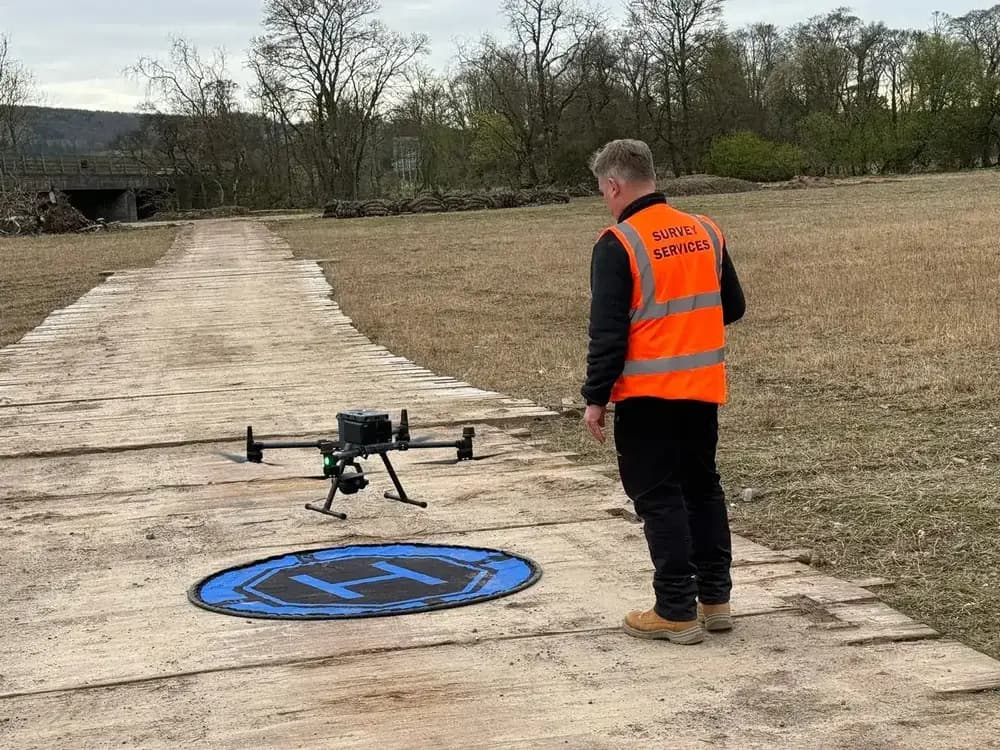
You’re likely familiar with flying a drone you can see. However BVLOS, or Beyond Visual Line of Sight, takes this a step further, letting you operate drones over vast distances without direct visual contact.
This opens up entirely new possibilities for various industries. But to harness this power, you must understand the specific technologies and complex regulations that make these advanced operations possible. So, what’s truly involved in flying beyond your sight?
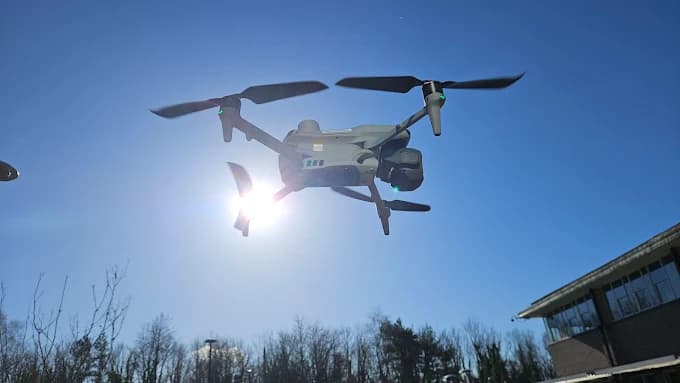
30 Second Summary
- BVLOS refers to operating a drone without direct, unaided visual contact from the pilot.
- Pilots use technology like camera feeds and telemetry data from a ground station for navigation.
- It requires advanced systems like detect-and-avoid (DAA) and reliable long-range communication links.
- This enables long-distance missions like infrastructure inspections, wide-area mapping, and delivery services.
- Special permission from a civil aviation authority is mandatory to conduct BVLOS operations legally.
What Is Drone BVLOS (Beyond Visual Line of Sight)
BVLOS, an acronym for Beyond Visual Line of Sight, describes a drone operation where the remote drone pilot can't maintain direct, unaided visual contact with the drone. Essentially, if you look up and can't spot your drone with your own eyes, you're flying BVLOS.
This can happen when you send the drone over the horizon, behind large obstacles like buildings or dense forests, or simply too far away for your vision to track it.
Instead of your eyes, you're relying entirely on technology. You're using the drone’s camera feed (often called FPV or first-person view), telemetry data, and onboard sensors to navigate and understand its orientation and position.
It’s important to remember that using visual aids like binoculars or a zoom camera doesn't negate this; the standard is what your naked eye can see. If you need a tool to see it, you've already crossed into BVLOS territory.
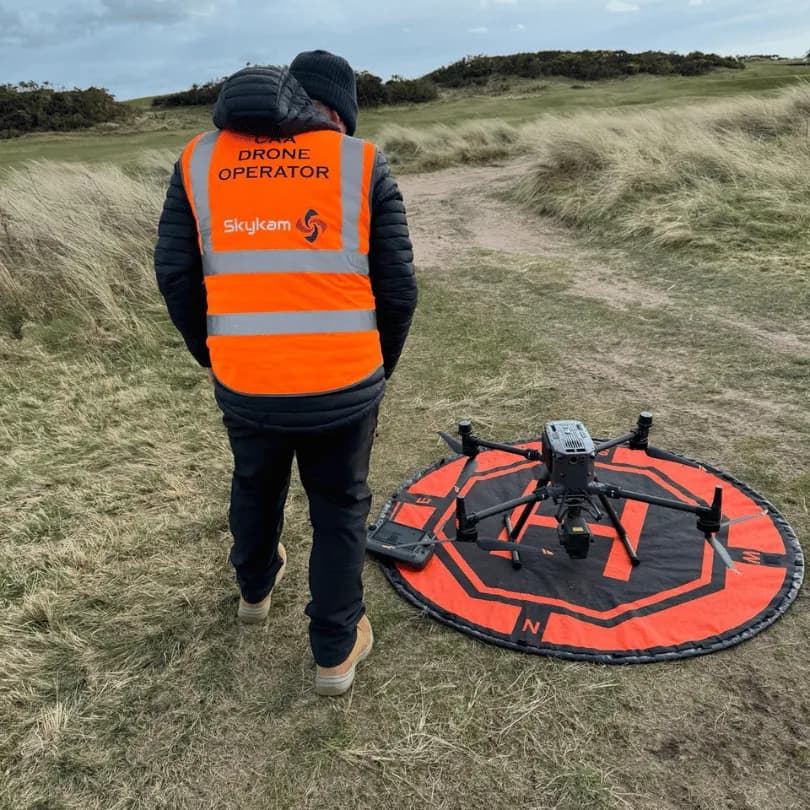
How Drone BVLOS Differs from Standard Flying
Unlike standard Visual Line of Sight (VLOS) operations, where you must keep the drone in sight at all times to avoid collisions, BVLOS flying puts you in control from a ground station. Instead of looking up at the sky, you're looking at screens that relay critical information directly from the drone.
You're effectively flying by instruments. Onboard visual devices become your new eyes, streaming a live feed of what the drone sees. You don't guess its position or status; you know it precisely through telemetry data.
This constant stream of information tells you the drone's exact speed, direction, attitude, and altitude. It's a completely different way of piloting that shifts your focus from direct, naked-eye observation to interpreting and reacting to data feeds. In VLOS, your eyes do the work. With BVLOS, you're a remote commander analyzing data to maintain safe control over vast distances.
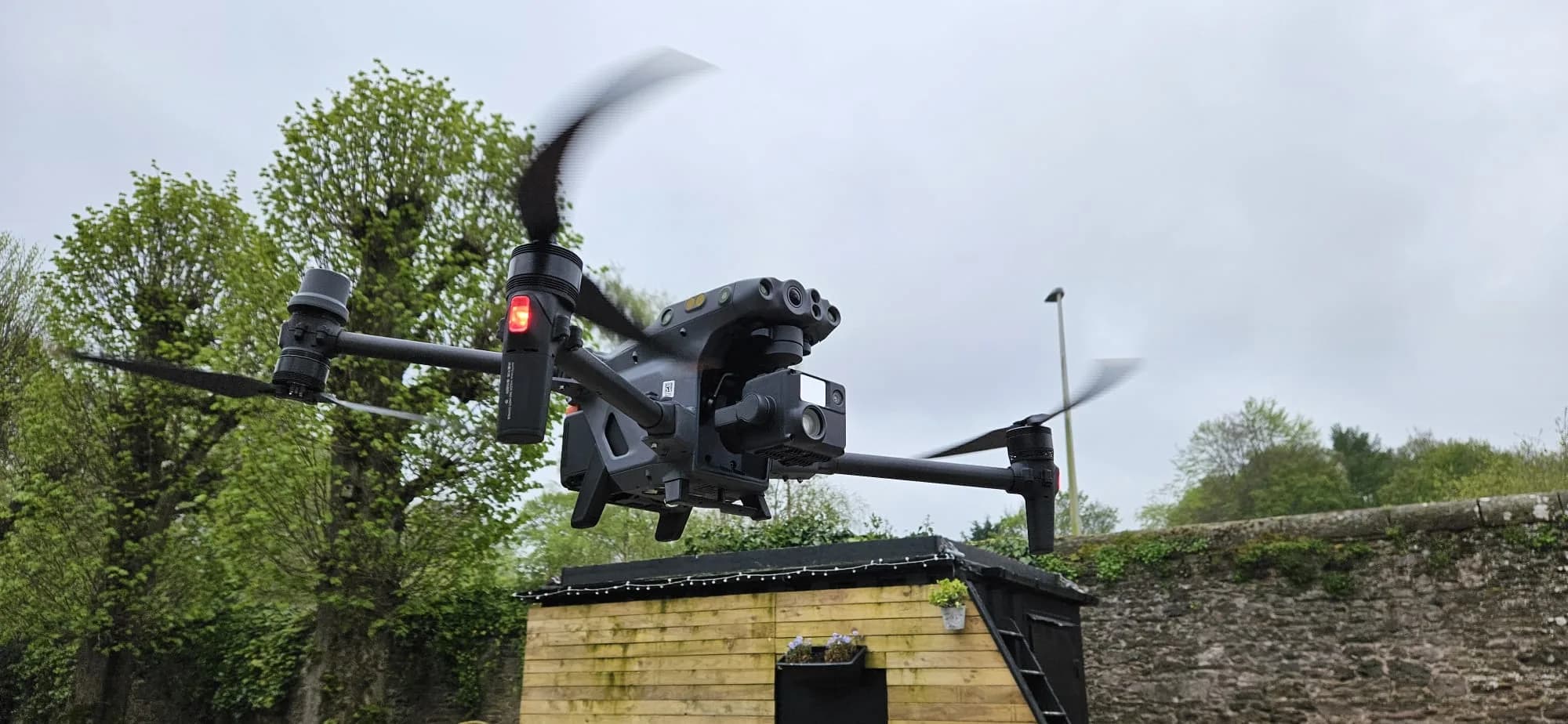
Technology Requirements Of Drone Beyond Visual Line of Sight
To safely fly beyond your visual range, you'll need a drone equipped with several critical technologies. Your drone requires autonomous flight systems to navigate the route and robust detect-and-avoid (DAA) capabilities to prevent collisions. It's also essential you maintain a constant, solid connection through enhanced communication and reliable command and control (C2) links.
Autonomous flight systems
A cornerstone of drone BVLOS operations is a robust autonomous flight system. Think of it as the drone's onboard brain, guiding it when you've lost sight.
You'll program a specific mission flight path before takeoff, meticulously plotting waypoints for tasks like surveying large agricultural fields or inspecting miles of utility lines. The drone then executes this pre-planned route on its own.
It's not just about blindly following a set path, though. This system also needs to be dynamic. It must process your real-time commands instantly, allowing you to react to unexpected developments. You can instruct a drone to alter its course, pause its mission, or initiate a return-to-home sequence, ensuring you maintain ultimate control over the operation.
Enhanced communication systems
While an autonomous system lets your drone fly its own mission, you'll still need a far-reaching communication system to maintain control.
Your drone’s standard radio link won't work for miles-long flights, so you'll need a serious upgrade.
This is where advanced communication systems become essential, ensuring you can always manage your drone from the ground station.
To achieve this, you can equip your drone with a modem to tap into cellular networks like 4G or 5G.
For truly remote operations where cell towers don't exist, you'll turn to satellite links for a constant connection.
Powerful, high-frequency radio signals also serve as an excellent dedicated solution.
These technologies provide the critical command and control link, letting you send new commands and receive real-time flight data.
Detect-and-avoid (DAA) systems
Since you won't be there to spot obstacles, your drone needs its own senses to navigate safely. This is where detect-and-avoid DAA systems come into play. You can think of them as your drone's electronic eyes and ears, constantly scanning the airspace for potential hazards.
These sophisticated systems use a combination of advanced sensors—like radar, LiDAR, and high-resolution cameras—to see what's ahead. But just detecting obstacles isn't quite enough.
The real magic happens when AI-powered technology processes this vast amount of sensor data in real-time. This tech allows your drone to make intelligent, autonomous decisions. If it detects another aircraft, a building, or a flock of birds, the DAA system helps it automatically calculate and execute a new flight path, ensuring it avoids a collision.
Reliable command and control (C2) links
To maintain full control of a drone you can't see, you'll need more than a standard radio link. Your typical remote's signal simply won't reach far enough and is easily blocked by terrain or buildings.
This is where robust command and control (C2) links become essential. They are the digital lifeline connecting you to your drone, ensuring you can pilot it and receive data from miles away.
These advanced systems maintain a constant, low-latency connection, which is critical for your situational awareness. You'll often use a combination of technologies like cellular (4G/5G) and satellite communications to create a redundant, failsafe link. This ensures you're always receiving vital telemetry and can send immediate commands, even if one connection path is interrupted.
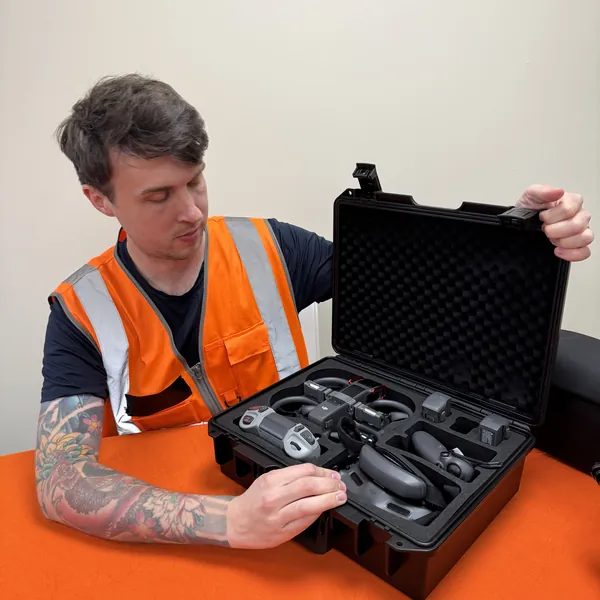
Applications and Benefits Of BVLOS
By extending a drone's operational range from a few thousand feet to many miles, BVLOS unlocks applications that aren't possible with standard line-of-sight flights. You can now conduct long-distance infrastructure inspections, covering vast stretches of pipelines or power lines in a single mission. Instead of just a local view, you're able to perform wide-area mapping projects that cover entire regions. Your operations can support large-scale delivery services, reaching customers over potentially unlimited distances.
In emergency situations, you can deploy drones for extensive search and rescue missions, surveying large areas quickly. Furthermore, you can carry out long-endurance surveillance missions that would be impractical otherwise. These expanded capabilities mean you're not just flying farther; you're fundamentally changing what you can achieve with your drone program, boosting efficiency and opening up entire new business models and crucial life-saving opportunities.
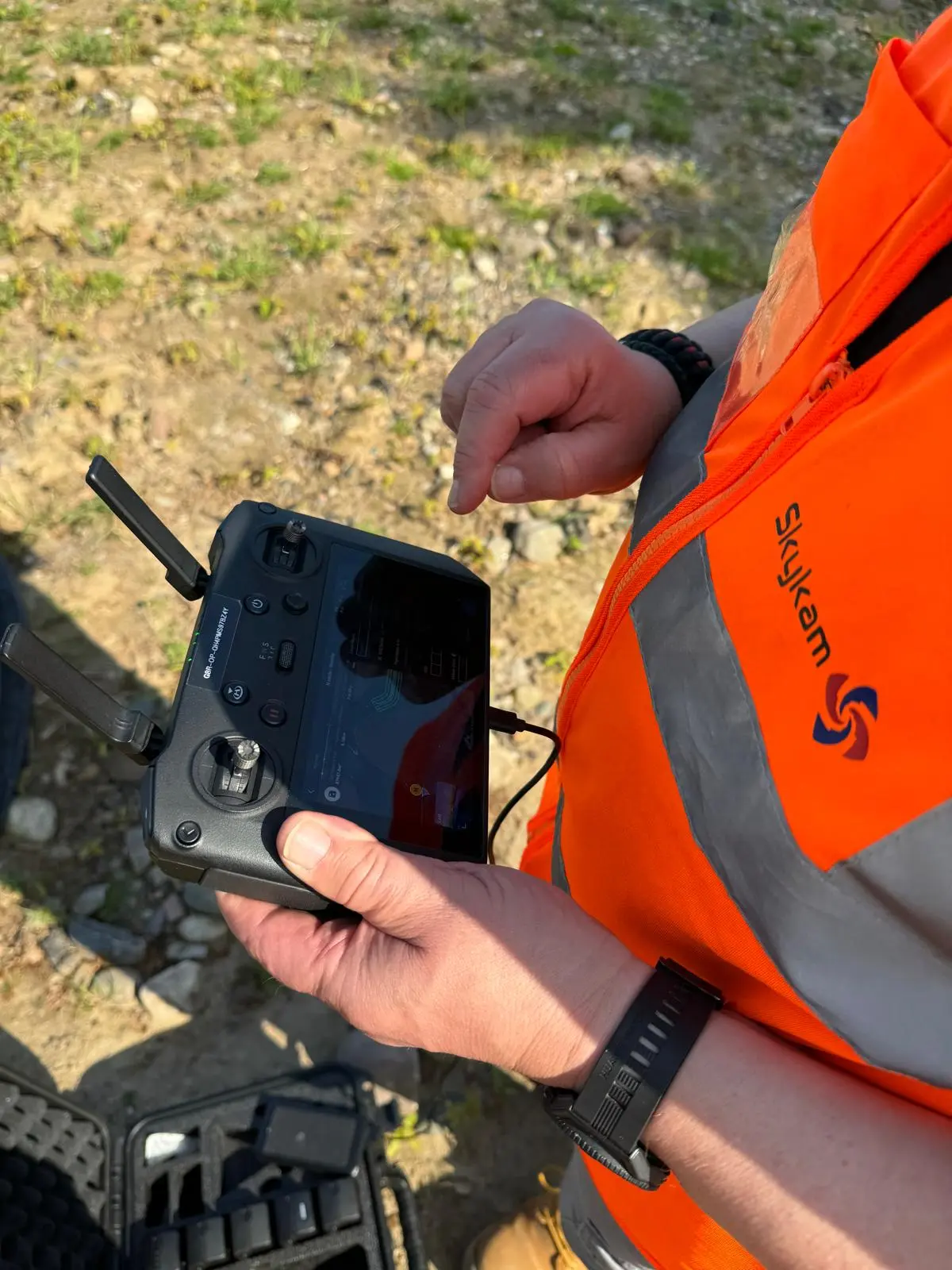
UK Regulatory Requirements Of BVLOS
While you're normally required to keep your drone within direct visual sight, BVLOS operations require special permissions from the UK's Civil Aviation Authority (CAA). To secure this approval, you must apply for an Operational Authorisation.
This involves submitting a comprehensive safety case that proves your proposed flights can be conducted without endangering other aircraft or people on the ground.
It's a rigorous process. You'll have to demonstrate that you've implemented stringent safety protocols to mitigate the inherent risks. Your plan needs to account for everything from potential conflicts with manned air traffic to navigating challenging terrain and detecting obstacles from a distance.
You're effectively showing the CAA that your technology, drone pilot training, and operational procedures are robust enough to ensure a level of safety equivalent to or greater than standard visual line of sight flights. This ensures every flight is properly vetted.
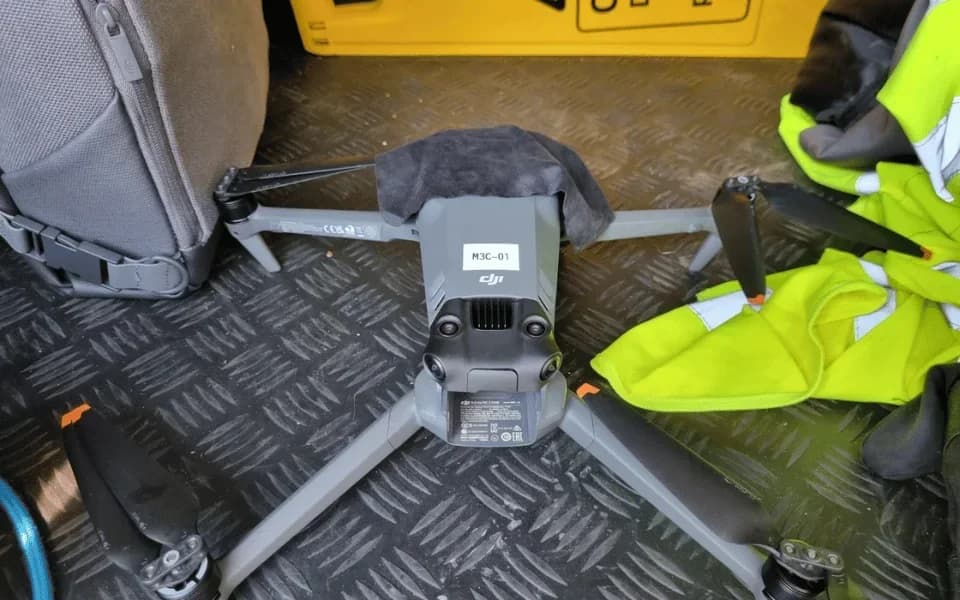
Frequently Asked Questions
How Much Do BVLOS Operations Typically Cost?
You'll find costs for these operations vary greatly. You're not just buying an advanced drone; you're investing in complex detect-and-avoid systems, robust communication links, and extensive regulatory approvals. Factoring in specialized drone pilot training and powerful software, your initial setup can easily run into the tens or even hundreds of thousands of pounds. It's a significant financial commitment before you even fly a single mission, with ongoing costs for insurance and maintenance.
What Specific Training Is Required for BVLOS Drone Pilots?
You'll need training that goes far beyond your standard drone pilot license. You’ll master advanced weather analysis, managing command and control links, and complex emergency procedures. Your curriculum also covers crew resource management and the proper use of detect and avoid (DAA) systems. You'll undergo extensive scenario-based training and learn the specific regulations for your operating waiver, which ensures you’re prepared for every flight’s unique challenges and requirements.
Do I Need Special Insurance for BVLOS Flights?
Yes, you'll absolutely need special insurance. Your standard drone policy almost certainly won't cover these advanced flights due to the increased risk. You must get a specific hull and liability policy that explicitly includes BVLOS operations. Insurers will demand to see your waiver, your comprehensive risk assessment, and details on your command and control link before they'll even provide a quote. Expect your premiums to be significantly higher than for standard operations.
What Happens if a BVLOS Drone Loses Its Connection?
If your drone loses its connection, it won't fall from the sky. You'll have implemented a failsafe procedure during your mission planning. The drone automatically initiates a pre-programmed command, such as returning to its launch point (Return to Home), landing in its current position, or flying to a designated alternate site. You'll establish these protocols to ensure the drone remains predictable and safe, protecting both your asset and anything or anyone on the ground.

Are BVLOS Regulations Similar in the US and Europe?
You'll find significant differences between US and European regulations. In the US, the FAA generally approves operations on a case-by-case basis through waivers, requiring you to build a specific safety case. You're proving your unique operation is safe. In contrast, Europe uses a standardized, risk-based framework (SORA). Under EASA, you'll assess your operational risk to determine which safety requirements you must follow, creating a more structured, predictable path to approval.
Unlock Advanced Aerial Operations with a BVLOS Specialist
Navigating Beyond Visual Line of Sight (BVLOS) operations demands advanced technology, regulatory compliance, and specialist expertise. These complex requirements can present a significant barrier for businesses aiming to conduct long-range inspections, large-scale mapping, or delivery services.
This is precisely the challenge HireDronePilot is built to solve. We connect businesses with a network of the UK's most skilled drone pilots, including professionals holding the necessary CAA Operational Authorisations and experience required for complex BVLOS missions. Whether your project involves utility line inspections, agricultural surveying, or remote asset monitoring, our drone operators have the verified credentials for the job.
As the UK's premier managed marketplace, HireDronePilot is dedicated to connecting businesses with verified professional drone pilots for hire. Our platform allows you to streamline drone services through competitive bidding from certified experts, ensuring quality, compliance, and value for every aerial project across the United Kingdom.
Ready to take your operations further? Find certified BVLOS drone pilots in the UK and receive tailored quotes for your specific mission requirements.
About the Author

Written by
Peter Leslie
Peter Leslie is a CAA-approved commercial drone pilot with 10+ years experience and over 10,000 flight hours. He holds the GVC and A2 CofC drone licences with full CAA Operational Authorisation. Peter is a member of ARPAS-UK, the UK's non-profit trade association for the drone industry. He founded HireDronePilot to connect UK businesses with qualified, insured drone operators.
Looking for More Drone Work?
Join the UK's leading network of professional drone pilots and grow your business.
Open Access
Bid on any job - all jobs open to all pilots
Grow Revenue
Access high-value commercial projects
Stay Busy
Fill your schedule with regular work
Related Articles

Our Drone Survey Service In Stirling, Scotland
Bringing you Stirling drone survey data from areas no one else can fly.

How Much Does A Drone LiDAR Survey Cost
Forecasting your drone LiDAR survey cost requires understanding what's hidden beyond the initial quote.

Step By Step Process Of Drone LiDAR Survey
Next, discover the crucial post-flight steps that determine your survey's success.
